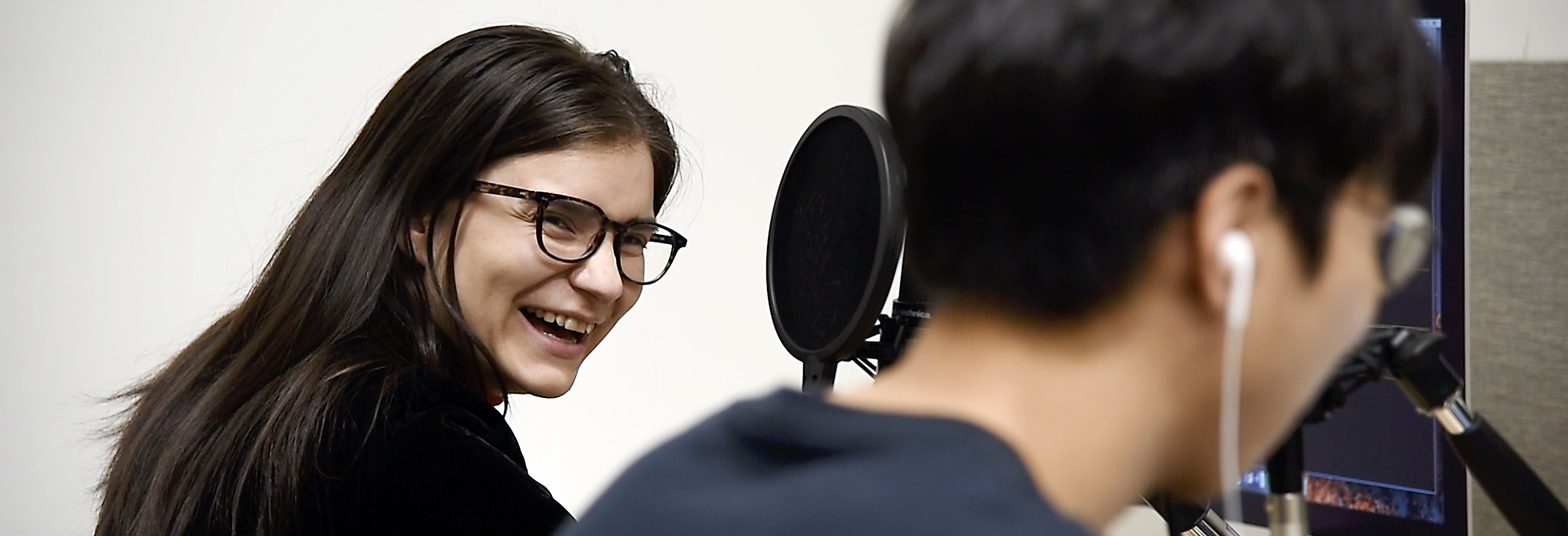In a tiny sound studio on the third floor in the Chapman Learning Commons, students Selina Boan and Kenny Park are rushing to get the latest edition of their podcast series, in[Tuition], produced. The final exam period is creeping up and their topic of discussion is apt for a UBC student audience: procrastination.
Boan and Park are part of the Chapman Learning Commons (CLC) team of students who assist with creating open content and resources for a university audience. Their work is guided in part by Cindy Underhill, a learning resource design strategist, who emphasizes the importance of empathy throughout the resource creation process. For Underhill, keeping that principle at the forefront of students’ minds is an ever-evolving practice.
“In terms of learning design, I don’t feel like it’s ever a one-shot deal,” she said. “We want to make sure we’re approaching the design of a resource from the learner’s perspective, but that means we need to revisit [the concept of empathy] on a regular basis.”
Underhill has frequent editorial meetings and group discussions with members of the CLC team about empathy. Raising questions like, “how would students relate to this? What would this mean to students? What’s interesting to students about this topic?” helps drive the creation of practical, open content.
“I think empathy can really support the concept of open learning,” she said. “For me, inclusive learning means you are really attending to a student’s sense of belonging, their ideas about relevance and the diversity of experiences they’re bringing to that learning environment.”
Bryan Short, a UBC alumnus and former CLC contributor, created a series of podcast episodes about how UBC students might be affected by digital copyright infringements.
Taking a cue from the copyright issues surrounding the U.S. federal case against Aaron Swartz, a computer programmer who was arrested and indicted with multiple felony charges, Short said the repercussions of that case still concern creators of digital content.
“I was trying to anticipate what a UBC student might care about, and in respect to their digital identities, they might care about copyright and the consequences of copyright infraction,” he said.
Short said he approached the creation of open content as a way to contribute to a larger, albeit digital, conversation. Sharing resources and methodologies makes whatever someone is creating better, he said.
UBC history alumna Laila Jamil said fostering a relationship between students and faculty is critical to understanding and incorporating empathy into learning resources and student-developed work.
Having the freedom to create and design resources within an open framework gives students an opportunity for their voices to be heard, she said. In producing a video for the CLC, Jamil said her creativity and empathy flourished.
“Coming up with my own ideas and refining them with the people who cared about [the same issues] in the CLC was the peak of working there for me,” she said.
Creating connections between the work and the audience while producing learning resources is in itself, the development of empathy, Underhill said.
“When you’re thinking about anything you’re designing from that place, you’re more likely to hit on things that are important to students,” she said. “You might spend more time upfront really being intentional about that learning design, but in the end, you’re creating a much better experience for students.”
The music “Lanky” by Blue Dot Sessions is licensed under a Attribution-NonCommercial License.

